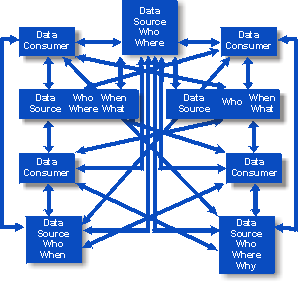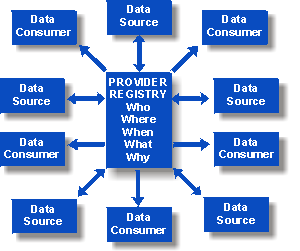BC Provider and Location Registry (PLR) - Frequently Asked Questions
Data Management
The PLR is a trusted source of health care provider (e.g., physicians, pharmacists, nurses) information available to authorized users.
This information is provided by organizations such as (but not limited to):
- College of Physicians and Surgeons of BC
- College of Pharmacists of BC
- Registered Nurses Association of BC
- Medical Services Plan of BC
- Provincial Health Services Authority
What is in the PLR?
The PLR contains core provider data such as:
- provider identifier
- provider status
- name
- demographic details
- contact information (i.e., address, telephone, fax, email)
Additional provider data may also be available in the PLR, including:
- provider credentials
- provider expertise
- conditions
- work locations
- provider relationships
Where does the information come from?
Each group of providers has a designated primary source - usually a professional college or association.
Primary sources provide data, control access to the data and give others (secondary sources) permission to update specific information.
Can providers update their own information?
In the long term, that is the plan. Once the electronic authentication requirements can be met easily and effectively, this functionality will be added to the registry, subject to authorization by primary sources.
Is information ever erased?
No. Data will be "active" or "not active." Expiry dates will be used.
Is it possible to have information removed (e.g., records of disciplinary actions)?
Only under special circumstances (e.g., incorrect information added to the PLR) can the information in the PLR be removed and only under the direction of the primary source.
Can information be hidden?
Yes. A primary source may wish to restrict data, which will prevent it from being seen by data consumers.
How do we ensure that information in the PLR is clean and accurate?
Primary sources already maintain quality membership data to meet their business needs and regulatory requirements. Data submitted to the PLR must meet published data standards prior to being placed in the registry. There will be a feedback process to the source should a consumer identify out-of-date or inaccurate information.
How are duplicate providers recognized and consolidated?
Processing to identify and prevent duplicates will occur automatically when a new provider is added to a registry. Duplicates may be identified as duplicate "provider as a person" or duplicate "provider in a role." These are resolved by the PLR administrator.
How does the PLR ensure a provider's access to available health information?
As electronic access to health information becomes more widespread, there is an increasing need to accurately identify, authenticate and authorize providers electronically. The registry is a centralized source of this information.
Example
Dr. Smith (provider) is registered and licensed by the College of Physicians & Surgeons of British Columbia. The college authenticates Dr. Smith and assigns a unique, public identification number. This data is sent to the PLR. A certificate authority may then record links to certificate information for Dr. Smith in the PLR. When Dr. Smith works in Prince George and accesses health data at a Vancouver hospital, authentication and authorization to view this data can occur because of the information available in the PLR.
How do data consumers know which work location address to use at any particular time?
Each data consumer needs to decide which work locations they will record for a provider. When distributing health information to a provider, the consumer uses the work location most appropriate to the originating order, the provider's practice profile, the provider/patient relationship or other parameters established by the consumer. Each work location has a corresponding work location type and location information (i.e., address, telephone, fax, email).
Example
A provider moves his/her office and notifies the source responsible for maintaining work locations of the office address change. Once recorded in the PLR, the change is circulated to all authorized data consumers (e.g., local hospital, private labs). Work location name and type assists the consumer in using the correct work location destination. The hospital may distribute patient discharge summary reports to the provider's office. A lab may distribute a lab test result report to the clinic work location the provider attended when the lab test was ordered.
Participation
Do providers have to give permission for their information to be included in the PLR?
Under section 26(c) of the Freedom of Information and Protection of Privacy Act, primary sources may disclose data under section 33(c) and 34(1) for what is considered "consistent purpose."
Primary sources notify their members of the data that is made available to the PLR, the authority and reason for disclosure. In BC, a privacy impact assessment has been completed.
Which organization performs the role of registry administrator?
Each province implementing a PLR will have its own registry administrator. In BC, the PLR is managed by the Health Registries branch at the Ministry of Health.
What are the benefits for providers and their professional associations to give information to the PLR?
The PLR helps providers reach all consumers that have a need to know their current information in one step.
Benefits to:
- All health care organizations - by reducing the number of distributions of health care data to incorrect or out of date destinations.
- Professional associations - by minimizing the number of inquiries for current information, resulting in reduced workloads.
- Providers - by ensuring new information is circulated promptly.
The PLR improves the quality of health data and communications between all stakeholders, reduces costs and improves efficiencies throughout BC's health care system.
Yesterday

Today

What are the benefits for data consumers (e.g., health authorities) and health care organizations?
Every health care organization maintains at least one (sometimes many) databases of provider information. It is expensive to keep data on these databases accurate and up-to-date. Health care organizations are able to access the PLR and use the data they need to keep their databases accurate with much less effort and cost.
As a data source, what are the costs to my organization to provide information to the PLR?
- Key members of your organization will need to assist our project team in the design of an interface between your information system and the PLR
- Your organization must be prepared to provide technical and business advice and possibly resources during the development, testing and implementation of that interface
- Some administrative support is required to maintain the quality of the information that you supply to the PLR
How do we know the PLR is poised to be a pan-Canadian standard?
The Canadian Institute for Health Information is working with other provinces to keep them informed and develop interest in following our lead.
Security
Is provider information authenticated?
Yes, providers are accurately identified and authenticated according to information supplied by primary sources, using data such as name, birth date and gender. Birth date and gender are mandatory information on the PLR.
Are digital certificates used?
The PLR uses a combination of certification authority signed certificates and self-signed certificates to secure web interactions. The core product must be interfaced to the user's security environment, which may or may not use digital certificates. The details of the interfacing are dependent on the environment being linked to.
Definitions
Contact information
For further information or support, please contact the Ministry's Registries team at:
